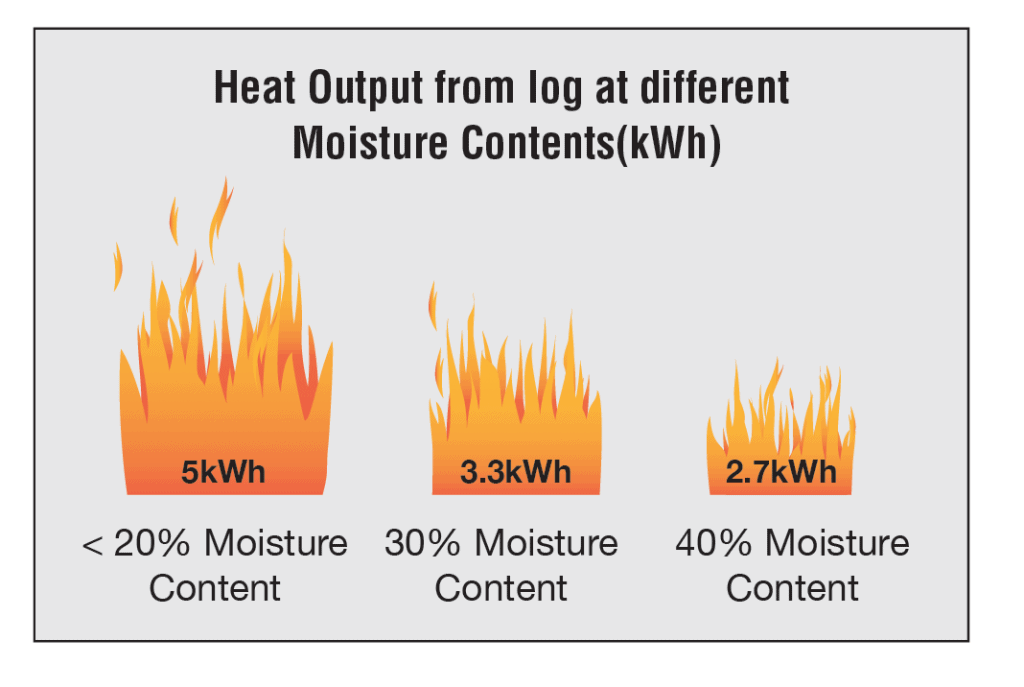Modern stoves are designed to burn only dry wood. Failure to follow this advise will lead to an increase in smoke and increased emissions, which will produce a poor heat output. The problems don’t end there either. Burning unseasoned “wet” wood will cause blackening of the stove glass and will also build up soot in the chimney, which can increase the risk of chimney fires, and potentially carbon monoxide poisoning.
Freshly cut wood typically has a moisture content of around 70% or more. Some woods, like ash have a much lower moisture content, as they retain much less water when they are alive, compared to other woods. However, even with woods like ash, they still burn much more effectively when correctly seasoned.
Below is an example of how the various moisture levels have a direct impact on the heat output of a fire. There is a huge different between partly seasoned wood (40%) and correctly seasoned wood (20-25%). The lower the moisture level, the higher the heat output.
A lower moisture output is preferred – but only up to a certain level. Anything below 20% is not advised. Burning wood, which has a too lower moisture level will cause the wood to burn too fast, produce too much of an intensive heat, and not last long. Ensuring your wood is around 20-25% is ideal.









